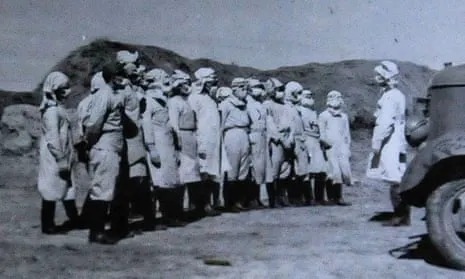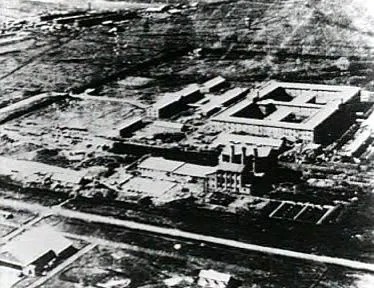Unit 731: A Horror In Real Life
A delightful greeting!
“Ah, greetings noble Enchanted Potato, thou dost shine so bright!
Pray tell, what magical tales dost thou bring to share with us today?”
‘Tis of Unit 731, a tale most dire,
Of secrets kept, and horrors that conspire.
A chapter in the annals of human strife,
That doth reveal the darkness of the human life.
Unit 731—this term may be unfamiliar to most, yet history knows it well. No, it is not a legal code or regulation, but rather a harrowing and inhuman chapter that defies the bounds of sanity. Unit 731 of Japan was a facility responsible for developing biological weapons, conducting experiments, and researching diseases to further their bioweapons agenda.
Now, while many are aware of humanity’s darker chapters—of nations developing and testing bioweapons—what makes Unit 731 stand out? Why does this specific unit remain a singular emblem of cruelty and horror?
The Origins
Established in 1936, Unit 731—short for Manchu Detachment 731 and also known as the Kamo Detachment—was located in Pingfang, Harbin, Heilongjiang, Manchukuo (now part of China). This unit was responsible for some of the most horrifying and brutal war crimes committed by the Japanese armed forces.
Human subjects, who were dehumanized and referred to as “logs,” were subjected to experiments in facilities called “log cabins.” The atrocities committed there were beyond imagination, encompassing:
- Disease injections,
- Controlled dehydration,
- Biological weapons testing,
- Hypobaric pressure chamber experiments,
- Vivisection,
- Organ harvesting,
- Amputation, and
- Standard weapons testing.
While many are familiar with the inhumane acts of Adolf Hitler, few are aware of the threat posed by Unit 731. Victims were kidnapped from across China and other regions, including prisoners of war. Selections were indiscriminate—men, women, and even children were taken. However, the unit had a preference for women, particularly pregnant ones.
The victims were subjected to unthinkable horrors: they were raped, tortured for days, and experimented on in cruel ways. Some experiments were disturbingly simple, such as testing how much pain a human could endure or how long someone could survive without food or water.
One chilling experiment involved forcing a prisoner to place their hand inside a machine with a small hole and multiple saw blades. They were told that if they screamed, their hand would be severed from their body. As the machine activated, the blades slowly dissected their hand into pieces. The agony experienced by the victims was unimaginable, and most died from the sheer pain and trauma on the spot.
Unit 731 was like the ominous area from childhood tales—the place where anyone who entered was never seen again. While most experiments were conducted within the unit itself, there were instances where biological weapons were tested in various parts of China. For example, water sources were deliberately contaminated, leading to widespread devastation in Chinese cities.
Before the establishment of Unit 731 in Pingfang, Unit Tōgō operated in the Zhongma Fortress, a prison and experimentation camp in Beiyinhe, a village about 100 kilometers (62 miles) south of Harbin along the South Manchuria Railway. The prisoners brought to Zhongma included common criminals, captured bandits, anti-Japanese partisans, political prisoners, and individuals falsely accused by the Kempeitai (Japanese military police).
Prisoners were initially well-fed, receiving rice or wheat, meat, fish, and occasionally alcohol to ensure they were in normal health at the start of experiments. But soon after, they were subjected to inhumane treatment—systematically drained of blood, deprived of food and water, and left to deteriorate while their declining health was meticulously recorded. Many were vivisected without anesthesia. Others were deliberately infected with plague bacteria and other pathogens.
In the autumn of 1934, a prison break jeopardized the secrecy of Zhongma Fortress, and a suspected sabotage-related explosion in 1935 further compromised the facility. These events prompted Ishii Shiro, the unit’s head, to shut down Zhongma Fortress. He was then authorized to establish a new, much larger facility in Pingfang, approximately 24 kilometers (15 miles) south of Harbin, which became the infamous Unit 731.

Experiments
In their experiments, Unit 731 purposefully introduced disease-causing compounds into captives, primarily Chinese civilians and prisoners of war (POWs). Subjects were also exposed to bombs that released infectious substances, which infected them upon contact with their skin. Those who did not succumb to infections were executed for postmortem examinations, and there are no records indicating any survivors of these studies. Researchers often used potassium cyanide or chloroform to kill survivors after the experiments.
To obtain specific organ specimens, the Tōgō Unit employed horrific methods. If Ishii Shiro or his colleagues wished to study the human brain, guards were ordered to find a “suitable sample.” The inmate would be taken from their cell, restrained by one guard while another split their head open with an axe. The brain would then be extracted and taken to the pathologist before the remains were disposed of through cremation.
At just 14 years old, Hideo Shimizu became part of the fourth group of juveniles assigned to Unit 731, thanks to a former school instructor’s recommendation. He later recalled being brought to a specimen room filled with jars of various sizes, some as tall as an adult. Inside the jars were human body parts, including preserved hands and heads, stored in formalin. One jar contained a pregnant woman’s abdomen, with the lower portion exposed to reveal a hairy fetus.
Shimizu also learned the term “logs” was deliberately used to dehumanize inmates, and the housing facilities were referred to as “log cabins,” further stripping the prisoners of their humanity.
Weapon Testing
Human targets were used to test grenades placed at various distances and in different positions. Victims were also subjected to flamethrowers. To evaluate the effects of pathogen-releasing bombs, chemical weapons, explosive bombs, bayonets, knives, and shrapnel bombs with varying fragment counts, prisoners were tied to stakes and used as living targets.
Chinese prisoners were exposed to direct bomb blasts to study the most effective treatments for Japanese soldiers with shrapnel wounds sustained on the battlefield. Victims were strapped, uncovered, to wooden planks staked into the ground at progressively greater distances from a bomb that was then detonated.
For some, the aftermath involved surgery to study the injuries in real-time. For others, it ended in autopsies to analyze the effects of the blasts.

Frostbite Test
To carry out his experiments, Army Engineer Hisato Yoshimura took prisoners outside and submerged their limbs in water at various temperatures, leaving them exposed until the limbs froze solid. Once frozen, Yoshimura struck the injured limbs with a short stick, producing “a sound resembling that of a board being struck.” After chipping away the ice, he applied various treatments to the afflicted areas to observe their effects.
Yoshimura’s methods earned him the nicknames “cold-blooded animal” and “scientific devil” from the Unit’s military personnel due to his unrelenting strictness, role in mass murders, and barbaric experiments. One particularly cruel act involved soaking the fingers of a three-day-old infant in ice and salt water to study the effects of freezing temperatures on human flesh.
Rape and forced pregnancy
Female inmates at Unit 731 were coerced into becoming pregnant to facilitate experiments. The torture was justified by the fabricated risk of vertical disease transmission (from mother to child), particularly syphilis. Researchers were primarily interested in studying fetal survival rates and the effects on the mother’s reproductive system.
Although “a large number of babies were born in captivity,” no survivors—including the children—have ever been reported from Unit 731. It is believed that the babies were either aborted or killed shortly after birth. Women were also subjected to sexual experiments, bacteriological and physiological tests, and sex crimes, while male inmates were often used in isolated studies to ensure that the results would not be influenced by external factors.
This practice was starkly highlighted by the testimony of a unit member who worked as a guard, shedding light on the horrifying reality of these experiments.
Conclusion
The total deaths associated with Unit 731 and its atrocities are estimated to be around 400,000. This dark chapter in history stands as a testament to immense destruction and the blackest moments of humanity’s past.
In closing, I’d like to leave you with one of my favorite lines:
“An apple fell, and the world came to know about gravity. But thousands fell, and no one came to know about humanity.”
